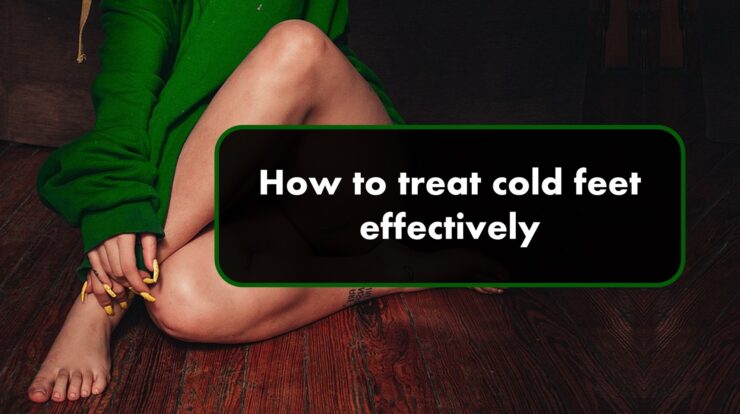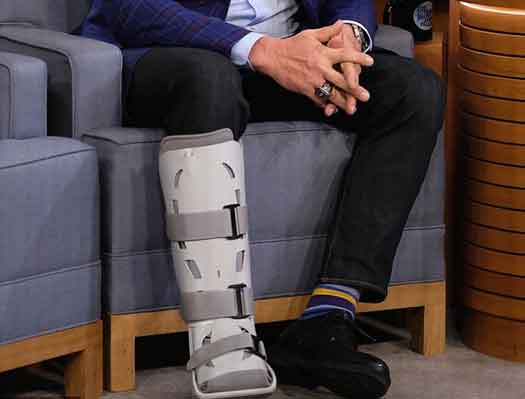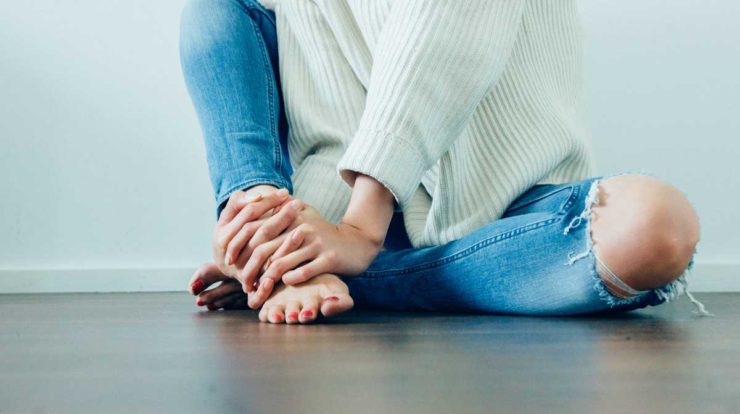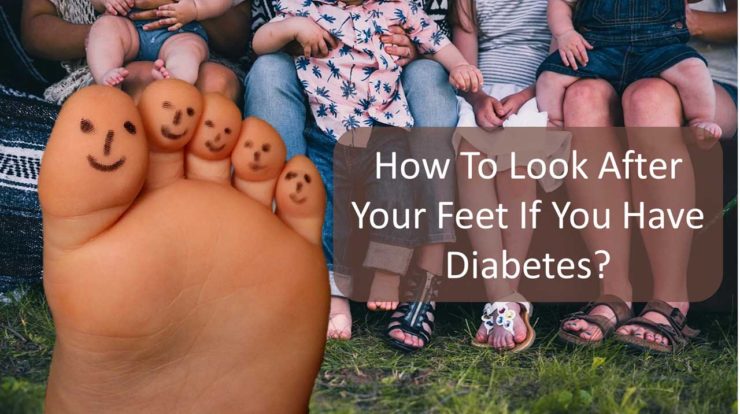
Did you know that the average person takes three to four thousand steps each day? That equals roughly 1.5-2 miles. This is only the average, what about those people who enjoy exercising and go for long walks and runs.
All that walking and running can have a negative effect on your feet, especially if you usually wear close-toed shoes. The friction between your toes and your shoes can cause chaffing, which could lead to blisters, and boy oh boy are they painful.
Surprisingly though, it’s not your big toe that’s prone to blisters from all the rubbing between your toes and your shoes. No, in fact, it’s your little toe that suffers the most.
The little toe might be the smallest in the bunch, but it surely does a lot, and if that little guy is in any kind of pain, you can be sure that walking will be no easy task. Fortunately, there are a few ways to reduce or stop the rubbing of your shoe against your little toe. Here are a few tips to help stop the problem.
How To Stop Shoes Rubbing My Little Toe:
There are several things you can try to reduce the friction between your shoes and your little toes, like adding a protective layer between the two or even altering the shoe itself.
Wear A Shoe That’s A Little Bigger:
The first mistake that people make when buying a shoe is buying one that fits too tightly. This gives very little wiggle room for your feet and they constantly rub against your shoe.
If you are buying shoes that are closed light sneakers or boots, you might want to avoid tight shoes as they leave very little room for wearing socks, which help keep your feet insulated, breathing properly and also prevent friction
However, buying shoes that are too loose can also be problematic. You might find yourself forcing the shoe to be tight in some places like around the area that has laces, which can make the shoe feel tight in all the other places like the toe box.
Too much space also forces your feet to move around the inside a lot, which means that you will experience more friction as you walk. This does not mean you shoe neglect the laces though. Tight laces are essential because they keep the outer parts like your little toe from moving too much against the shoe.
Keep in mind; your shoes need to sit on your feet like a comfortable, perfectly fitted second protective layer, but with enough room for your feet to breathe and to continue proper blood circulation.
TIP: If you’re going to buy a shoe, do so in the late afternoon or at night. The reason for this is because you will have been on your feet all day walking, and your feet will have expanded or swelled up a bit from all the standing and walking. This is the right time to buy a shoe so that it will fit your feet that have already expanded just right.
Wear Thick Socks:
Socks in general already provide a protective layer to prevent friction. However, if you find yourself still getting a few blisters on your little toe, then you could try wearing thicker socks. Thick socks will provide your feet with enough cushion to prevent any rubbing between your shoes and your little toe.
Socks are also meant to keep your feet dry and clean, so that fungus doesn’t grow from the sweat. If your feet are constantly rubbing against your shoes, they tend to sweat. Sweat allows for even more friction to take place.
Your feet will sweat no matter what, but at least when you wear socks, they can absorb all the sweat. Wearing socks is also necessary when your shoes are not made of very breathable materials, like when they are lined with synthetic leather fabrics, which insulate the heat from your feet and trap the moisture and bacteria inside your shoe. Socks provide a protective layer to keep your feet clean, dry, and safe.
Thick socks can also be helpful in the event that your shoes are a little too big for you. They can fill the extra space so that your feet don’t move too much inside your shoe. Just make sure you buy soft socks that are made from cotton because polyester socks will irritate your feet just as well.
Use Powder:
The powder is meant to help if you have a sweat problem. Since sweat increases the friction between your feet and shoes, powder targets the sweat by absorbing it.
All you need to do is dab a generous amount onto your toes, just enough to absorb the sweat and a little extra to absorb future sweat. Then you can put your shoe back on and enjoy the friction-free movement.
TIP: Another substitute for powder is antiperspirant. Apply some onto your little toe if it tends to sweat a lot so that it minimizes the perspiration from it throughout the day.
Stretch Out Your Shoes:
In the event that your shoes fit a little too tightly, especially at the end of the day when your feet have swelled up a bit, or even if your shoes are just a little too tight around the little toe – try stretching your shoe out a bit. There are a few tricks you can try to stretch your shoes without damaging them.
The first thing you can try is using a hairdryer. If your shoe is made from a material that can stretch such as nubuck, suede or leather, then you can try applying heat from the hairdryer over the intended area for about five minutes. This process should be done daily over a period of a few days until the shoe has stretched to your intended length or width.
If the heat doesn’t work, try freezing it. This method is designed for shoes that can sit in the cold. What you’ll need to do is fill a Ziploc bag with water and then insert it into the shoe. Then you need to put the shoe inside your freezer and let it freeze overnight.
When the water freezes, it will force the shoe to stretch a bit. If this didn’t work after the first try, try again for a few more nights until you achieved your desired stretch.
The next method uses chemicals. Go down to the shoe store or a hardware store for a shoe stretching spray. You will have to read the instructions and do as they say, but to sum it all up: use the spray on the intended area. The spray will soften the material of your shoe so that it can be stretched. You should keep using the spray until you are happy with how much your shoe has stretched.
If none of these DIY methods have worked, try enlisting the help of professional tools like a shoe tree. Most people won’t opt-out for this method because it involves spending money on a tool that will probably only be used on one shoe that’s too tight.
However, if you do feel like buying this tool, it will help stretch out both the length and width of your shoes until you are satisfied. This tool could come in handy if you noticed that most shoes don’t fit the shape of your feet properly, and stretching them out with a shoe tree can be way cheaper than having your shoes customized.
Use Toe Caps And Cushions:
If you’ve noticed that you get blisters very often in the same area as your little toe, then you should add more protective layers in that area. For starters, you can add a gel toe cap to your little toe to prevent any friction from occurring in that area, and to help with any blisters from forming.
Cushions are also a thing to try. There are two you should keep in mind. Blister cushions act as a toe cap and prevent friction between your toes and your shoes. The second cushion you can try is in the event your chaffing and blisters are a result of shoes that are too big. The cushion can be inserted in the toe box to fill the space until your foot sits snugly in your shoe without moving around too much.
Rubbing Alcohol And Vaseline:
The last trick you can give a try is applying a combination of rubbing alcohol and Vaseline onto the inner lining of the shoe where your feet experience the most friction.
If your little toe is often the victim of blisters, apply the combination to the area inside the shoe where your little toe sits.
The rubbing alcohol will soften the material of the shoe, while the Vaseline will offer some lubrication between your toe and your shoe so that when there is movement, your toe won’t experience any friction but rather a soft and smooth slide.
This method can be beneficial over time because the softening from the rubbing alcohol will allow your shoe to stretch a bit as you continue to use it until it fits perfectly.
So, if you are experiencing a lot of friction between your little toes and your shoes, there are a few things you can try to stop the painful rubbing so that you can strut through your day pain-free and with confidence. Go ahead and choose which solution suits you best.






